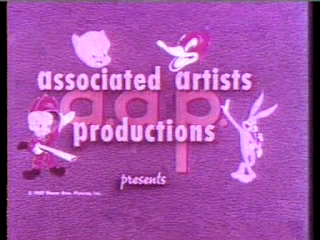DVD-Blu-Ray Availability: none
If you would like to see a nice print of Lewis Milestone's 1939 film (discussed in-depth here), click HERE to download it. Thanks to Devon Baxter for supplying this unusually nice version of a film lost in PD limbo.
<><><><><><><><><><>
The Avery unit's last cartoon of 1940 was inspired by the 1939 Hal Roach-produced film of John Steinbeck's Of Mice and Men. Directed by Lewis Milestone, who helmed films as dissimilar as All Quiet on the Western Front (1930) and Ocean's 11 (1960), the movie, for its pastoral settings, is a fore-runner to the film noir sensibility. Its main characters, George and Lennie, are pre-destined to suffering, trouble and tragedy. They first appear in Milestone's version two steps ahead of a lynch mob, running for their lives and hopping a freight train to temporarily escape death.
We next see them aboard a bus, and the characters and their relationship are deftly established. George Milton (played by Burgess Meredith) is a confident, world-weary know-it-all. Had his life circumstances been better, George might have been a wheeler-dealer. Instead, he's an itenerant laborer saddled with Lennie Small (Lon Chaney, in a breakout role that should have led to bigger things, but never really did).
Lennie was described by a junior high school classmate, c. 1975, as a "ree-tard." He was sent to the principal's office for this outburst, which was too much by '70s standards [altho' racial and cultural epithets were still alive and well in American pop culture] and, I presume, chastened for this statement.
Lennie has issues; due to a traumatic head injury, he lacks the ability to reason and remember. He's eerily reminiscent of a person with Alzheimer's. Save a few strong memories, Lennie can't hang onto to any event for more than a few minutes. We see him have a distressing moment. He reaches in his front shirt pocket for his work permit, can't find it, and panics. Easygoing George reassures him; he's got both their permits. Would he, for a minute, entrust Lennie with such an important slip of paper?
George and Lennie are 86d from the bus by a vexed driver (played, uncredited, by Eddie Dunn, a veteran actor and a familiar face from Hollywood Westerns and occasional classic films like The Great Dictator and The Bank Dick) and face a 10-mile walk, under the merciless California desert sun, to the ranch where they'll strain their bodies hoisting bags of grain in exchange for three hots and a cot.
They decide to camp out in a wooded area. There, George forces Lennie to hand over a dead bird, which he heaves away in disgust. Lennie likes to pet small animals--it obviously calms his general sense of ill-being. George complains about having had to take away a dead mouse a few days earlier.
After their meal of canned beans, Lennie exhorts George to repeat a favorite fantasy: that, someday, the two of them will settle down, and be well-off. They'll have a small farm of their own, and Lennie will have the job of taking care of the rabbits. "Tell me about the rabbits, George," Chaney's Lennie says, with all the hope in the world showing in his glazed, innocent eyes.
 |
| Lon Chaney, Jr. and Burgess Meredith in roles of a lifetime |
Lennie was described by a junior high school classmate, c. 1975, as a "ree-tard." He was sent to the principal's office for this outburst, which was too much by '70s standards [altho' racial and cultural epithets were still alive and well in American pop culture] and, I presume, chastened for this statement.
Lennie has issues; due to a traumatic head injury, he lacks the ability to reason and remember. He's eerily reminiscent of a person with Alzheimer's. Save a few strong memories, Lennie can't hang onto to any event for more than a few minutes. We see him have a distressing moment. He reaches in his front shirt pocket for his work permit, can't find it, and panics. Easygoing George reassures him; he's got both their permits. Would he, for a minute, entrust Lennie with such an important slip of paper?
George and Lennie are 86d from the bus by a vexed driver (played, uncredited, by Eddie Dunn, a veteran actor and a familiar face from Hollywood Westerns and occasional classic films like The Great Dictator and The Bank Dick) and face a 10-mile walk, under the merciless California desert sun, to the ranch where they'll strain their bodies hoisting bags of grain in exchange for three hots and a cot.
They decide to camp out in a wooded area. There, George forces Lennie to hand over a dead bird, which he heaves away in disgust. Lennie likes to pet small animals--it obviously calms his general sense of ill-being. George complains about having had to take away a dead mouse a few days earlier.
After their meal of canned beans, Lennie exhorts George to repeat a favorite fantasy: that, someday, the two of them will settle down, and be well-off. They'll have a small farm of their own, and Lennie will have the job of taking care of the rabbits. "Tell me about the rabbits, George," Chaney's Lennie says, with all the hope in the world showing in his glazed, innocent eyes.













